A Culinary Model for Successful Mobile Offices
Over the past few weeks, we’ve been talking about mobile paper. Today, we’re looking at the specific systems of materials and skills needed by all you road warriors in your mobile offices. And ironic as it might seem coming from someone who has blogged previously about a lack of kitchen-related skills, Paper Doll is a big believer in imitating the systems of a chef when developing an auto-office. I, Julie, may not be in the same realm as Julia  (or even Dan Aykroyd’s version of Julia), but I nonetheless propose:
(or even Dan Aykroyd’s version of Julia), but I nonetheless propose:
A Culinary Model for Successful Mobile Offices
As professional organizers and moms are known to say, the key to organizing is to have “a place for everything and everything in its place”. Just as a chef (hopefully) won’t find the eggs in the mailbox, nor the ice cream next to the phone, nor spark plugs in the veggie crisper, it’s important to the mobile office manager that things get put where they belong, things that don’t belong get removed, and that there’s a system for acquisition, storage, and retrieval of all papers.
Any chef’s basic system is comprised of two elements: simple tools and solid, replicable procedures. An effective mobile office system echos these same elements. First, the tools:
- Deep Freeze
Whether it’s a scary freezer chest big enough to store a season’s worth of Bullwinkle 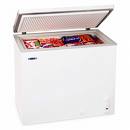 or a typical fridge-top freezer, every cook takes advantage of cold storage. Within, there are not-ready-for-prime-time items that could be called upon to make a meal, but in general, are not going to be grabbed quickly or accessed without forethought. If you’ve just popped home for a quick lunch, that fully frozen beast isn’t going to be your first choice.
or a typical fridge-top freezer, every cook takes advantage of cold storage. Within, there are not-ready-for-prime-time items that could be called upon to make a meal, but in general, are not going to be grabbed quickly or accessed without forethought. If you’ve just popped home for a quick lunch, that fully frozen beast isn’t going to be your first choice.
Similarly, the cold storage for road warriors is paperwork that may eventually need to be retrieved, but you’re not going to expect spontaneous access. Your Deep Freeze (usually a filing cabinet) lives in your permanent office (your home office, your corporate office, etc.) and is made up of two categories: archival materials (e.g. closed client files) and deep reference (e.g., papers with historical but not immediate practical value).
Neither archival nor deep reference need to be traveling around with you, taking up valuable real estate in the passenger seat. Keep them in cold storage until needed.
- Pantry
Whether cooking for the PB&J crowd or masterfully delivering at the Iron Chef level, every cook has a pantry for all of the essentials: the standby, non-perishable (or slow-to-perish) ingredients, basic utensils and cookware.
The mobile office needs to be equipped with a pantry, too. This mobile Pantry appears most often as an open, milk-crate style file crate or sturdy lidded 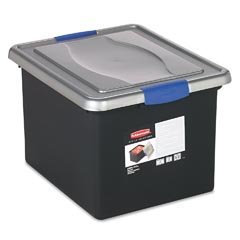 tote. Either fits well in your trunk and can be safely moved to your hotel room or event venue, as necessary. The Pantry is basically a filing system of the non-perishables of your profession: the one-sheets, the handouts, the brochures, the glossy catalog pages, blank forms and templates from which you will periodically select a small subset (see Weekly Shopping Trip and Specialty Ingredients, below) for daily/weekly use.
tote. Either fits well in your trunk and can be safely moved to your hotel room or event venue, as necessary. The Pantry is basically a filing system of the non-perishables of your profession: the one-sheets, the handouts, the brochures, the glossy catalog pages, blank forms and templates from which you will periodically select a small subset (see Weekly Shopping Trip and Specialty Ingredients, below) for daily/weekly use.
Unlike the Deep Freeze, because of careful upkeep and maintenance of the Pantry and its proximity to your work area (i.e., your car), you can access the contents on an unplanned basis with a quick jaunt to the trunk. (With the rest of the trunk tidy, your Pantry, alphabetically filed within appropriate categories, is for your eyes only, but you’ll need not be embarrassed if someone sees the contents.)
- Lunch Box
If the Deep Freeze is an archive, kept neatly tucked away back at headquarters, and the Pantry is a source for all your typically-needed ingredients, like the file drawers in a standard office desk, your Lunch Box is what allows you to carry your masterpieces with you. While the Deep Freeze and Pantry are solely practical, the Lunch Box can be whimsical 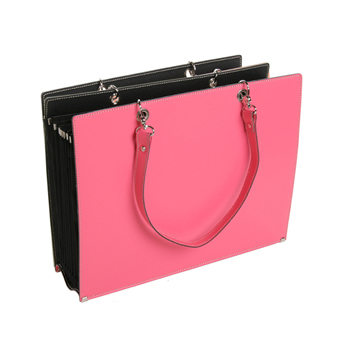 or workmanlike, depending upon your profession and/or personality. The Lunch Box allows you to take your papers into the offices and venues of your clients and prospects without seeming like you’re setting up shop. The most practical (but least fabulous) is the portable file box that really does look like a lunchbox
or workmanlike, depending upon your profession and/or personality. The Lunch Box allows you to take your papers into the offices and venues of your clients and prospects without seeming like you’re setting up shop. The most practical (but least fabulous) is the portable file box that really does look like a lunchbox 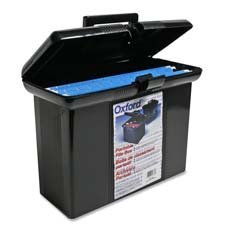 , though if your mobile paper includes hefty catalogs, you’ll probably want to put wheels on that Lunch Box and make it a littlemobile. (Think: picnic basket more than lunchbox.)
, though if your mobile paper includes hefty catalogs, you’ll probably want to put wheels on that Lunch Box and make it a littlemobile. (Think: picnic basket more than lunchbox.)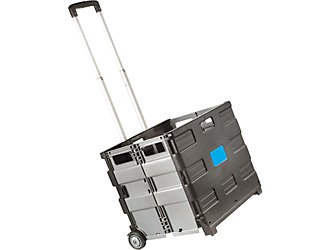
If your papers are outsized (and you’re a contractor or architect who spends a lot of time on the road), you’ll probably want one box, crate or bag for contracts and standard paperwork, plus a super-sized Lunch Box (i.e., portfolio case) for your super-sized meal (i.e., papers). Depending on your client types (fashion boutiques or banks), your portfolios may be stylish  or subdued
or subdued  .
.
- Leftovers
Every chef has to be prepared for leftovers. In a fancy restaurant, the remains of your meal will be artfully crafted into a tin-foil swan. At home, the food that makes the second-day cut goes straight into Tupperware or Rubbermaid food storage. Well, your mobile paperwork includes leftovers, too. At the end of each visit to a client, customer or prospect, you’ll likely have anything from signed contracts to paperwork that needs to be faxed to headquarters to notes requiring some sort of follow-up action on your behalf. Sure, you’ve mastered the art of entering the tasks into your smartypants phone or logging them in your planner (right?), but what do you do with those papers that are awaiting action?
At the very least, carry a manila folder labeled “To Process”; match it to an alarm reminder on your computer or phone to prompt you to address the papers (and get them where you’ll see them at the right time). Better yet, use my beloved tickler file 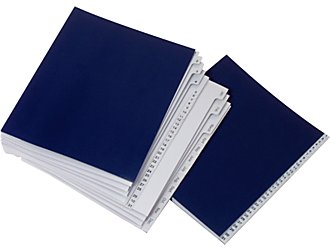 to ensure follow-up on projects (and if you’re new to tickler files, be sure to pick up a copy of Tickle Yourself Organized to gain the best benefits).
to ensure follow-up on projects (and if you’re new to tickler files, be sure to pick up a copy of Tickle Yourself Organized to gain the best benefits).
Tangible tools are an essential part of the Culinary Model for Successful Mobile Offices, but don’t forget the procedures that allow us to equate culinary delight with mobile office success:
1. Read the Whole Recipe–As anyone who has ever watched the Thanksgiving episode of Friends where Rachel makes the trifle knows (and if you don’t know, you MUST click that link), a recipe is a game plan that lets you which know ingredients and tools you need, when you’ll need them, and in what order. As Rachel proved, inexactitude breeds a distinct kind of failure.
For your mobile office to work effectively, you’ll need to schedule time every day, as well as once a week for a full-menu planning session. At the end of each business day, whether you’re back at headquarters, in your hotel room or in that little corner of your house affectionately known as “the office” (and the guest room and the craft room…), sit down to read your recipe. For the next day (or the upcoming week), determine:
- Who do you need to see?
- How will you get there (and when)? Do you have the maps/directions organized in chronological order of the visit?
- What is the end-goal of the meeting/appointment?
- Based on the goal, what papers will you need to display or distribute?
- Do you have enough copies of each piece of paper? If not, when and where will you make/acquire extras?
- What documents will you need signed or returned to you from a previous visit?
2. Make a Weekly Shopping Trip–On a weekly basis, a home chef will replenish the pantry to make sure that almost everything one might need for a planned (or spontaneous) meal will be available. The cook shops, returns home and puts away the groceries.
The road warrior’s process is similar. With recipe (planned schedule) in hand, the mobile office manager determines what items might need to be removed from the Deep Freeze for review or evaluation at any particular meeting along the route. Next, it’s necessary to “shop” in the Pantry to gather the items that will be needed in the Lunch Box for the next day (or the coming week, depending on how ambitious you are in following the plan).
3. Locate Special Ingredients–A typical weekly shopping trip doesn’t always take advantage of surprise sales or allow for the acquisition of fresh produce at the Farmers’ Market. Similarly, if you’ve got a mobile office, you know that sometimes your week is atypical. Maybe you usually present to offices and organizations on topics A and B, but this week includes a specialty presentation and will require making and distributing new Powerpoint copies or photos never used before. A careful reading of the “recipe” for the week ahead allows every mobile office manager to prepare, make copies and never be stranded.
4. Clean Up As You Go–The one thing most cooks will tell you is that keeping an organized kitchen is dependent upon simply cleaning up as you go along. If you leave the counter and sink full of sticky, dirty dishes and utensils, it creates bigger, stickier messes that require more elbow grease to get clean.
Handling papers, especially in a mobile office, works the same way. If you walk out of a client’s location, toss all of the loose papers in the back seat and head onward to your next location, by the end of the day, let alone the week, your mobile office will look like a motor vehicle accident that happened from the inside-out.
Build buffer time, even just ten extra minutes, into your mobile schedule. As soon as you return to the car, before ever belting yourself in, go through your Lunch Box and special ingredients to make sure that any papers you acquired in the meeting are either filed for reference or added to your “leftover” container (i.e., tickler file) for prompt follow-up. Just as you’d return the container to the fridge to keep milk from spoiling after adding it to a recipe, it’s essential to put your papers where they belong…on a timely basis…to make sure they won’t spoil (i.e., won’t collect coffee stains or disappear just when you need them the most).
If you aim to use your buffer time to file away your frequently used and/or newly-acquired papers, by the time you pull into your driveway (or the hotel parking lot) at the end of a long business day, you’ll feel more at ease. Taking a few moments to remove the pop cans, meal wrappers and other detritus from the car ensures you’ll get into a fresh-smelling, chaos-free mobile office the next day.
5. Taste-test and Refine the Recipe
Every chef knows that even the best recipes require tweaking. When you encounter something that doesn’t quite work, make a note of it in your planner so that you can address it during your next “recipe review” planning session. When you review your recipe for the next day, do your “shopping” in the pantry, transfer tomorrow’s essentials to your lunchbox, and then close up the kitchen (i.e., lock the car), secure in the knowledge you’ve had a good day on the road.
We’ve talked about general mobile paperwork issues, paperwork that travels with you on your daily errands and how to operate a mobile office. Next week, to round out our mobile paperwork chat, we’ll discuss what design features maximize your paper portability–what your backpack, messenger bag or briefcase needs to ensure you can get on a plane or train or just amble over hill and dale, while keeping your papers (and your mobile sanity) secure.
So, anyone else hungry?




Follow Me